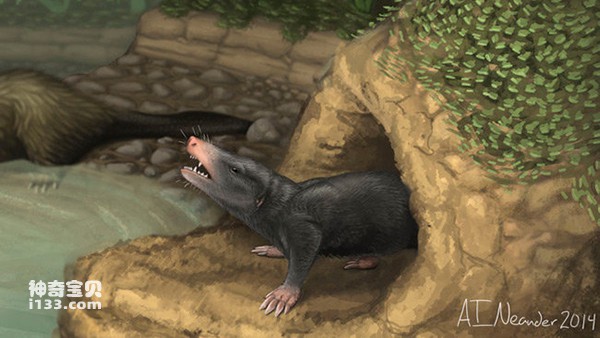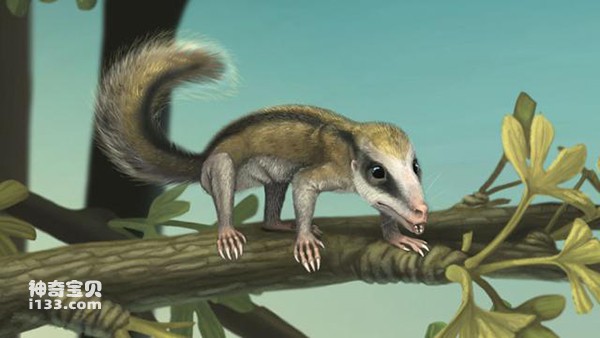Chinese and American researchers said on the 12th that two fossils discovered in northern China showed that early mammals had learned to climb trees and dig holes in the ground during the Jurassic Period, which was dominated by dinosaurs about 160 million years ago. , showing diverse ecological adaptations, thus successfully occupying a place on the earth.
Both fossils come from a primitive mammal called Stylodon. One of them is named Climbing Dexterous Stylodon. It lived 165 million years ago and is the earliest known arboreal mammal. . Another species was named the Brachydactyl Digger, which lived 160 million years ago and is the earliest known burrowing mammal. The American "Science" magazine published two papers that day, introducing relevant findings.

The earliest known burrowing mammal: a reconstruction of the short-fingered burrowing Stylodon
Luo Zhexi, a professor of paleontology at the University of Chicago who participated in the research, told Xinhua News Agency that the fossil of the climbing dexterous Stylodon was discovered in Ningcheng, Inner Mongolia in 2011, and the short-fingered digging Stylodon fossil was discovered in Qinglong County, Hebei Province in 2012. "The two new fossils have very special characteristics of fingers and toes. The dexterous Stylodont lived in trees and had specialized teeth to eat tree sap. The Digging Stylodont lived underground and had teeth that could eat worms and insects. .”

The earliest known arboreal mammal: a reconstruction of the climbing dexterous Stylodon
He said that Stylodonts are an extinct lineage of close relatives of living mammals that only existed in the Jurassic and subsequent Cretaceous periods. Their morphological characteristics represent the original morphological characteristics during the origin and evolution of mammals. Two types of stylodonts discovered in China showed diverse ecological adaptations, "showing that the earliest primitive mammals were more diverse and had a wider range of differentiation, and also showed that dinosaurs had an impact on the Mesozoic Era (including the Triassic, Jurassic and Cretaceous). Three Centuries) was not as strong as previously thought."
Another researcher, Meng Qingjin, director of the Beijing Museum of Natural History, said that the climbing dexterity Stylodontus is "the earliest known and most primitive climbing arboreal mammal." The short-fingered digging Stylodontus is "the first example of this. A proven primitive mammal with a specialized burrowing lifestyle."
In 2006, a semi-aquatic swimming civet-tailed animal fossil discovered in Inner Mongolia was also a cylindrome. Meng Qingjin said that these discoveries "show that the functional diversity and evolutionary divergence of the earliest mammals were far beyond previous expectations."
The new research was completed by a research team composed of Luo Zhexi, Meng Qingjin, and Ji Qiang from the Institute of Geology, Chinese Academy of Geological Sciences. The two newly discovered fossils are both collected in the Beijing Museum of Natural History.
animal tags:
We created this article in conjunction with AI technology, then made sure it was fact-checked and edited by a Animals Top editor.